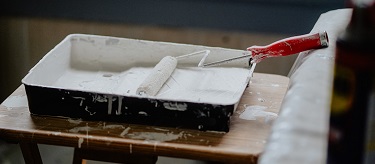Money Hacks: how DIY can save you money and increase your happiness
Money Hacks is a series exploring Behavioural Economics concepts to illustrate how unconscious biases can influence the decisions. Here’s how the Ikea Effect can save you money and increase your happiness.
When my wife and I bought our home about 20 years ago, one of the things that appealed to us was the back yard. We had young kids and wanted an outdoor space where they could play independently. And while the back yard was small, it had a deck, two maple trees for a bit of shade, and a nice lawn with room for a swing-set. Our back yard was ready for our young family.
Fast-forward to last spring. Our backyard situation had changed dramatically. The maple trees had grown and kept the yard in shade most of the day, and keeping our lawn alive each summer was an exercise in futility. Plus, it had been years since our kids needed an outdoor play area.
In short, we no longer loved our back yard. It was time for a makeover.
After much debate we decided what we wanted to do: get rid of what grass remained, add a stone patio around the deck, expand our garden, and put up hammock posts. With our destination set, the next question was – how do we get there? We knew we’d have to buy the stones, posts, and mulch either way. But paying a landscaping company to do the work would add thousands of dollars to the overall cost. With some hesitation, we decided to tackle the project ourselves.
With tearing out the lawn, hauling stones, leveling the patio, and digging the post holes by hand, our backyard makeover was every bit as much work as we expected.
But it also involved lots of family time. Our kids helped. We shared some laughs. And, though we were often tired and sore at the end of the day, it was a good tired. When we were finally done, our back yard had turned out even better than we expected.
Yes, a professional would have given us a nice back yard. But, because we did it ourselves, we have a nice back yard and an ongoing sense of pride and satisfaction every time we look out the window.
If you’ve ever built, fixed, or created something yourself, you can probably relate to this experience. In fact, our tendency to value something more if we’ve done it ourselves is so prevalent that it has a name: The Ikea Effect. Understanding the Ikea Effect could help you make decisions that improve your finances and your happiness.
What’s the Ikea Effect?
The Ikea Effect is simply the idea that we value things more if we make them ourselves. The name of the concept is based on a psychological experiment published in 2012. In the experiment, participants in two groups were each given a storage box from Ikea. Those in the first group were each given an unassembled box and asked to put it together.
Those in the second group were each given a box that had already been assembled by someone else. Then, members of each group were asked to indicate how much they’d be willing to pay for their box. You can probably already guess the outcome: participants in the first group - those who had built their box - were willing to pay 63% more than those who had received a pre-assembled box.
The result isn’t all that surprising – when we make something, we feel pride in it and value it more. Most of us have experienced the Ikea Effect many times throughout our lives without ever knowing it had a name. But when we think about the Ikea Effect in the context of our day-to-day finances, it can help us make better spending decisions.
Do-it-yourself (DIY) is about more than saving money
Typically, when we’re deciding whether to hire a professional, we go through a scale-balancing exercise in our heads. On one side of the scale is the money we could save by doing the work ourselves. On the other side is the time, stress, and effort we could save by hiring a professional. The scale may tip one way or the other from project to project, but we generally only consider these two factors.
But what if we also considered a third factor: the happiness and satisfaction we’ll get from doing a job ourselves? If we add that to the “do-it-yourself” side of the scale, we may tip the scale in that direction more often. And this could save us money and increase our happiness.
When is DIY less likely to lead to increased happiness?
While doing it yourself can increase your happiness, it doesn’t always lead to that outcome. Here are a few things to consider before embarking on a DIY project:
1. Can you realistically do the work?
With detailed online tutorials and parts/supplies available with the click of a mouse – DIY has never been easier. But research has shown you’ll only get that happiness-boost if you complete the project. If you attempt a project beyond your abilities, you may be unable to complete it successfully and will still need to hire a professional.
2. Do you have room in your life for this project?
A DIY project requires a time commitment and may involve some short-term stress. If you don’t have enough time or emotional reserves available to complete a project, you may be better off hiring someone. Once again, failing to complete a project means no Ikea Effect.
3. What’s the worst-case scenario?
When we renovated our back yard, the worst-case scenario was we’d have to pay someone to finish the job. But what if a project involves plumbing or electrical wiring? In those cases, the worst-case scenario is much more serious – a flood or a fire. For projects where a lot could go wrong, make sure you’ve got the expertise to get it right.
Use the Ikea Effect to improve your finances and increase your happiness
Next time you’re debating whether to hire a professional or do a project yourself, don’t forget about the Ikea Effect. Taking on a new project every now and again can save you money and give you an extra boost of happiness.


